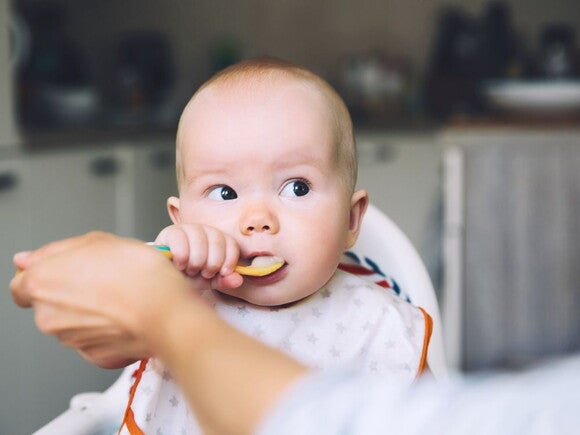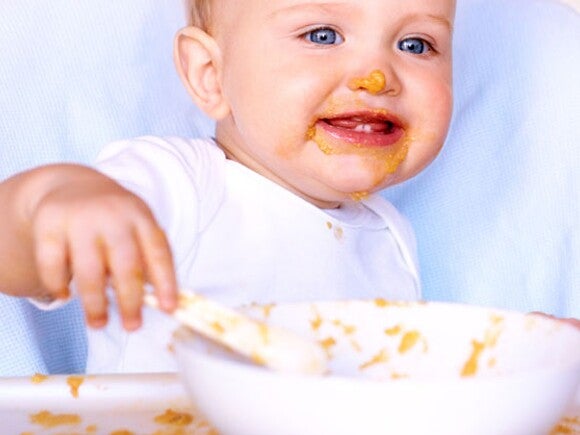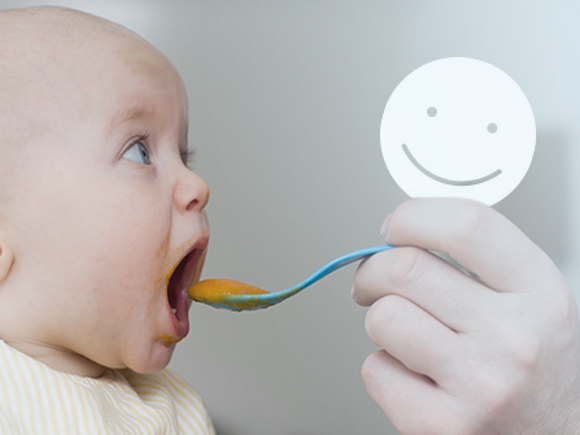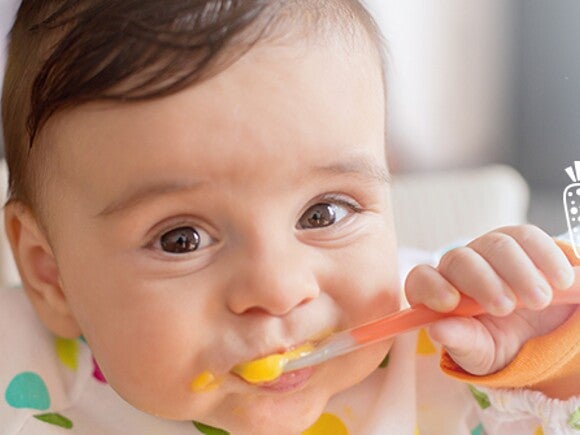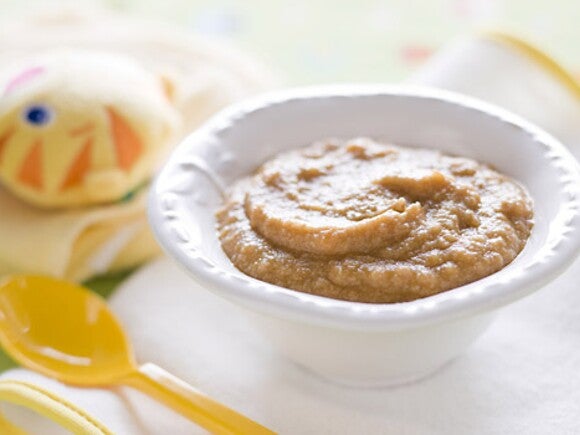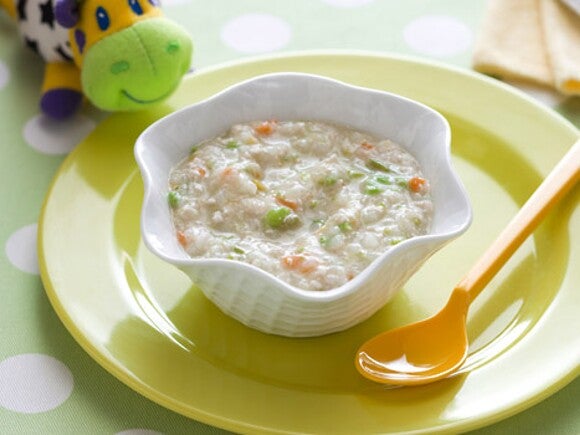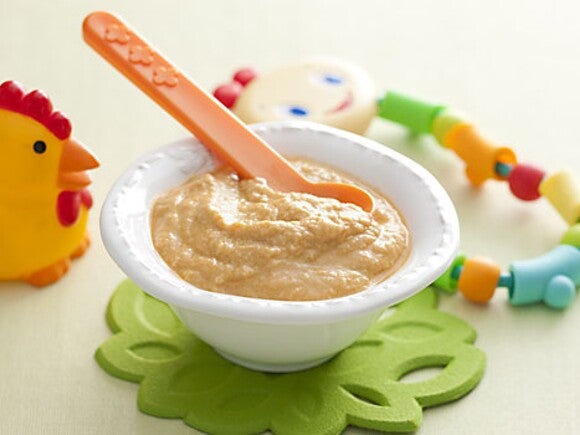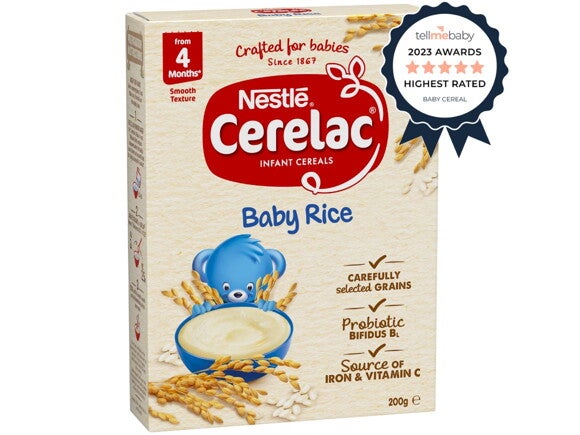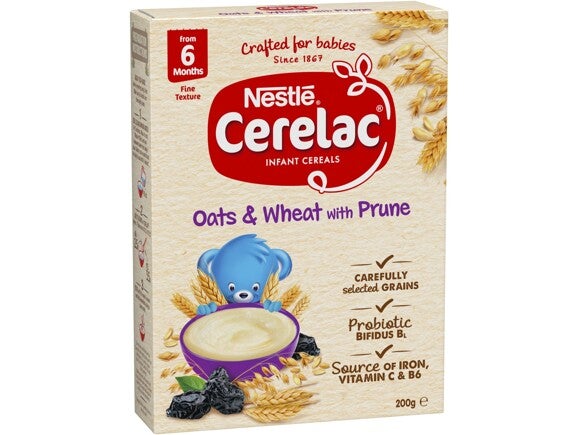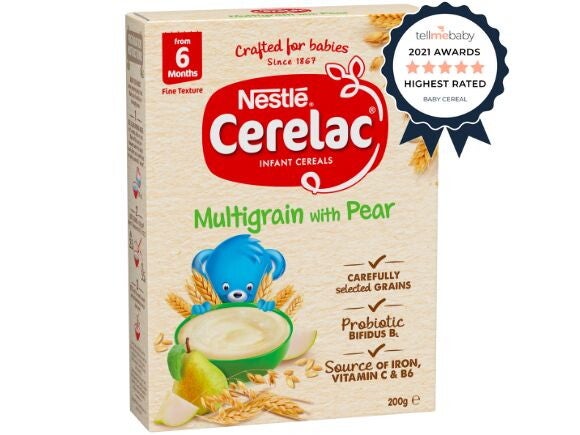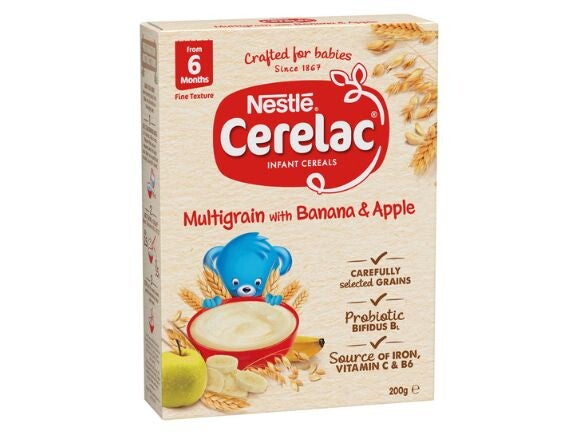Why is IRON so important?
Iron is an essential nutrient needed for the growth and development of all infants. Iron supports many important functions within the body during these early years including immune system function, and assisting energy production.1
But its most important role is supporting brain development and function.
From birth to two years of life, your baby's brain will experience rapid cognitive growth, as it increases in size and weight. Ensuring adequate iron intake, as part of a varied diet is critical in this step.
What are the main sources of IRON?
A baby is born with iron stores from their mum, via the umbilical cord.
At around 6 months of age your baby’s iron levels naturally start to diminish and breast milk alone is no longer sufficient to cover the energy and nutrient requirements (including iron) of most infants. At this time, introducing solid foods will help bridge that gap.
The Australian infant feeding guidelines (NHMRC, 2013)2 recommends starting on solid foods that contain iron, such as iron-enriched infant cereals, to help meet your child’s iron requirements.
How common is IRON deficiency / insufficiency in Australia?
A recent nationwide nutrition survey (OzFITS, 2021)3 showed that 75% of infants aged 6-12 months were not consuming enough iron!
How can CERELAC infant cereals help my Baby?
Iron fortified
CERELAC is a convenient way to increase iron intake as it contributes on average at least 50% of recommended daily intake (RDI*) per serve.4 5
Age-appropriate
Tastes and textures specifically designed to nourish and support the nutritional needs of growing infants
Probiotic Bifidus BL
A probiotic similar to those found in the digestive system of breastfed babies.
Tailored nutrition
CERELAC provides key nutrients, such as vitamin C and Iron in a volume suitable for an infant’s limited gastric capacity
# Enjoy CERELAC as part of a varied diet.
*FSANZ RDI for both infants 0-6 months and 6-12 months.
References
1. FSANZ Standard 1.2.7 – Nutrition, Health and Related Claims. Available at https://www.legislation.gov.au/Details/F2014C01191. (Accessed October, 2022)
2. National Health and Medical Research Council. Infant Feeding Guidelines. 2012.
3.Moumin, N.A. et al. Nutrients 2023, 15, 1144. https://doi.org/10.3390/nu15051144
4. WHO. Nutritional Anaemias: Tools for effective prevention and control. Nutritional anaemias: tools for effective prevention and control. Geneva: World Health Organization; 2017. Licence: CC BY-NC-SA 3.0 IGO
5. Australian Food Composition Database. Available at https://www.foodstandards.gov.au/science/monitoringnutrients/afcd/Pages/default.aspx. (Accessed October, 2022).
NB:
- Cerelac Rice = 1.5 mg Iron per 15g serve
- Cerelac Oats & Wheat = 6.3 mg Iron per 21g serve
- Cerelac Oats and wheat with prune = 6.2 mg Iron per 21g serve
- Cerelac Multigrain banana Apple = 5.9 mg Iron per 21g serve
- Cerelac Multigrain with Pear = 5.9 mg Iron per 21g serve
- Weet-bix = 3.01mg Iron per 21g serve, or 4.3mg per two biscuit serve (30g)
- Porridge Oats = 0.2mg/21g
